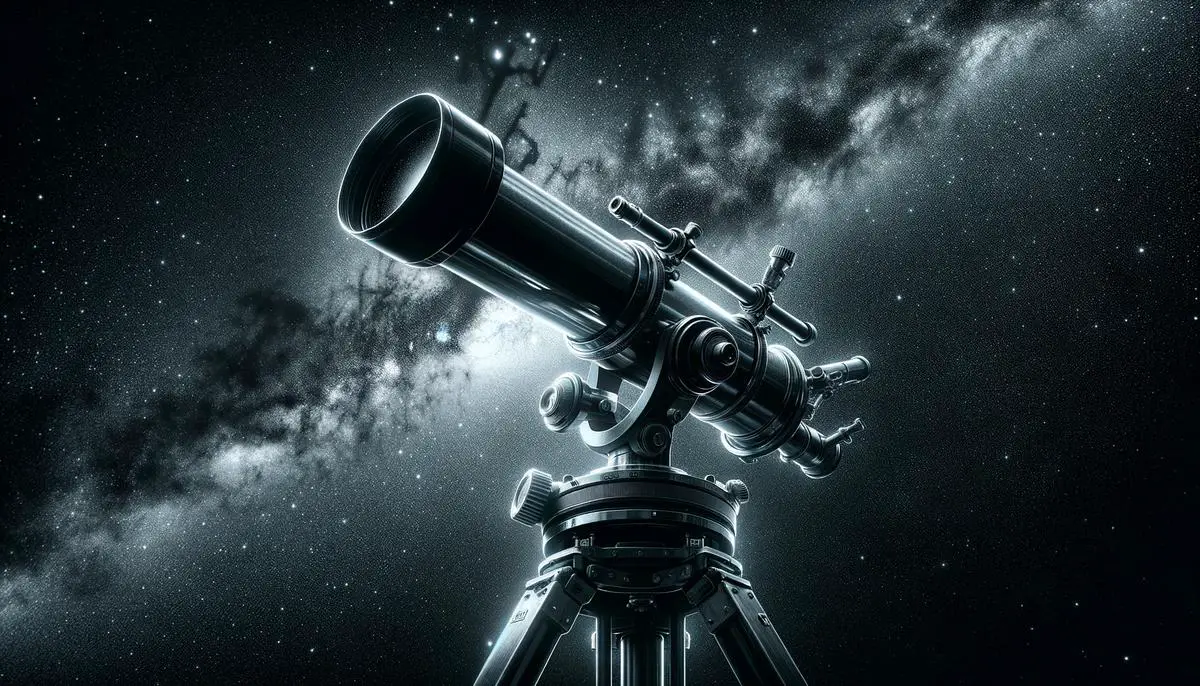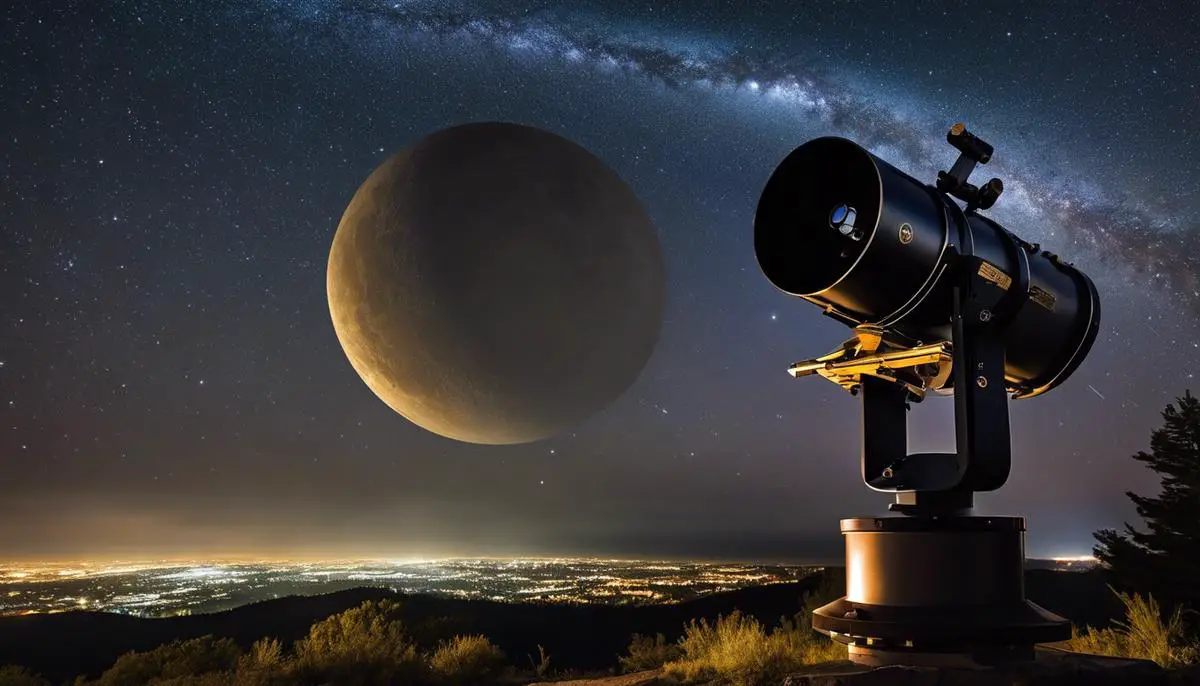Telescopes have been our windows into the cosmos, revealing the wonders of the stars, planets, and galaxies beyond our own world. Wide-field telescopes, specifically designed to give us a broader snapshot of the universe, take this exploration to new heights. These specialized instruments capture extensive areas of the night sky in a single view, offering not just more stars per glance, but also a unique glimpse into the movements and behaviors of celestial events. From backyard stargazers to professional astronomers, understanding the mechanics and benefits of wide-field telescopes empowers us to unlock the secrets of space.
Understanding Wide-Field Telescopes
Wide-field telescopes are a big deal in astronomy, and for good reason. These instruments stand out because they can capture a huge part of the sky in a single shot. Imagine looking through a regular telescope—you see a tiny slice of the cosmos. But with a wide-field telescope, it’s like you’ve got a panoramic view. Super wide!
So, what’s so special about seeing more sky at once? For starters, these wide-reach telescopes can spot a bunch of cosmic objects in one go. They are perfect for mapping the stars, searching for asteroids, and tracking down comets. Plus, they’re ace at finding stuff that flashes or moves, like supernovae—those explosive star moments—or even the mysterious flickers called gamma-ray bursts.
The secret to their wide gaze? It’s all in the design. Wide-field telescopes pack special lenses or mirrors that spread their sight over large chunks of the sky without losing detail. This design is a bit different from the usual telescopes that zoom in on tiny bits of space.
Some of these wide-eyed wonders also use top-notch cameras. We’re talking cameras with tons of pixels that could make your smartphone weep. These cameras grab super crisp images of the stars and galaxies, and because the telescope sees such a wide area, it’s like getting a detailed map of a city from the sky instead of a street corner.
And just like high-def TVs make movies look better, wide-field telescopes give us high-quality images that help astronomers peel back the layers of the universe’s mysteries. They compile heaps of data every night—which is candy for researchers.
Then there’s the magic of teamwork. When these telescopes buddy up with others around the world, they form a network. This lets astronomers get a snapshot of the whole sky in no time. Imagine that—a full cosmic picture, as easy as taking a selfie!
So here’s the big picture: wide-field telescopes are special because they open up new possibilities to explore space. They make it easier to watch the grand show of the cosmos in high def, see more of what’s out there, and piece together the space puzzle. Scanning the vast skies might seem like a daunting task, but with wide-field telescopes, astronomers have the power to gaze deeper, wider, and clearer than ever before. And that’s a game-changer in unlocking the universe’s secrets.

Top Wide-Field Telescope Models
When selecting a telescope to expand your view of the night sky, you’ll want to look for models known for their wide-angle capabilities. These telescopes, often referred to as wide-field telescopes, are designed to capture expansive swaths of the sky in a single image, making them ideal for viewing larger celestial objects and phenomena.
Among the top contenders for the widest views is the Explore Scientific ED80. This refractor telescope boasts an 80mm aperture with a short focal length of 480mm (f/6), enabling a generous field of view. It’s a favorite for astrophotographers and visual astronomers alike, thanks to its portability and the crisp, wide images it produces.
Another telescope that offers broad celestial vistas is the Orion SkyQuest XT8 Classic Dobsonian. It features an 8-inch aperture and a specially designed Dobsonian mount to effortlessly sweep the heavens. Although it has a longer focal length, its design caters to a wide-field observation, inviting astronomers to dive into the depths of the Milky Way.
Those looking for a computerized option might turn their gaze towards the Celestron NexStar 8SE. Its Schmidt-Cassegrain design and advanced optics provide a wide field of view despite its compact size. With its GoTo mount, sky scanning for wide-field targets becomes a task of ease, allowing even amateurs to jump from one end of the cosmos to the other with a touch of a button.
For the ultimate broad-sky experience, the Meade LX850-ACF 14″ Telescope stands out. It’s not just its formidable 14-inch aperture that garners attention but also its advanced ACF (Advanced Coma-Free) optics that reduce distortion at the edges of your wide-field images. This behemoth of a telescope is a significant investment but promises awe-inspiring, panoramic views of the starry expanse.
These wide-field telescopes are gateways to a more profound appreciation of the universe. They ferry astronomers across vast celestial landscapes, revealing clusters, nebulae, and galaxies in a way that narrower views could not encompass. Upgrading to one of these wide-field models could be the difference between seeing a star and witnessing a galaxy, between catching a meteor’s fleeting trail or mapping out the intricate dance of a comet’s journey across the sky.

Astrophotography with Wide-Field Telescopes
Wide-angle capabilities in telescopes are crucial for those who wish to embrace the grandeur of the night sky. Through lenses that seize vast stretches of the cosmos, enthusiasts and professionals alike can indulge in the splendor of celestial phenomena. Wide-field telescopes stand at the forefront of this endeavor, facilitating the capture of expansive skies in singular, breathtaking images.
Delving into the world of wide-field telescopes, one encounters the Explore Scientific ED80. This exceptional instrument boasts an 80mm aperture paired with a short focal length, ideal for sprawling starry vistas. It is particularly lauded among astrophotography circles for its ability to provide crisp, wide views with little to no distortion at the edges, a hallmark of superior wide-field performance.
For those inclined toward classic design imbued with modern capabilities, the Orion SkyQuest XT8 Classic Dobsonian remains a popular choice. Its 8-inch aperture gathers ample light, while the specially designed Dobsonian mount makes scanning the vast celestial canvas both intuitive and enjoyable. It’s a gateway to the wonders of the Milky Way and beyond, making it a favorite for amateur astronomers and seasoned sky watchers alike.
The Celestron NexStar 8SE makes its presence known as a formidable computerized option. With its advanced Schmidt-Cassegrain design, this telescope delivers broad vistas through sophisticated technology. It represents a harmonious blend of user-friendly operation and wide-field optics, allowing for both detailed study and the enjoyment of large-scale structures in the cosmos.
For the utmost in wide-field observation, the Meade LX850-ACF 14″ Telescope emerges as a titan. With an impressive 14-inch aperture and advanced ACF optics, this instrument is designed to diminish optical aberrations, presenting sharp and expansive views. Such a telescope opens the doors to the deepest corners of the universe, revealing clusters, nebulae, and galaxies that evade the narrower gaze of standard telescopes.
Wide-field telescopes are more than mere tools; they are windows to the soul of the night. They enable the observation of celestial gatherings that a narrower field of view cannot capture. From the intricate dance of star clusters to the swirling mists of nebulae and the grand tapestry of galaxies, each observation tells a story of cosmic scale and beauty.
Transitioning to a wide-field telescope transforms the astronomical experience, offering a more immersive and awe-inspiring perspective. As observers peer through these larger lenses, a profound understanding and appreciation of the universe’s vastness become inevitable. The stars seem closer, the darkness less daunting, and the wonders of space more intimately known, inviting all who gaze upward to explore the very edges of human knowledge and imagination.

Impact on Scientific Research
The night sky, a twinkling tapestry of countless stars, has long intrigued those who gaze upon it. The ability to witness its vastness can leave one in awe, a feeling augmented by the use of wide-field telescopes, tools that have been instrumental in several pivotal scientific discoveries.
Wide-angle capabilities in telescopes enable enthusiasts and scientists alike to soak in not just a narrow slice of the cosmos but to embrace expansive views. Beyond the enchantment of grand scale stargazing, these telescopes are crucial in the study of celestial objects that sprawl across the sky, such as extensive star clusters, sprawling nebulae, and the spiraling arms of distant galaxies. The importance of these instruments can’t be overstated, as they’ve cracked wide open the door to profound findings.
Central to the field of astro-discovery is the identification and study of exoplanets. The Kepler Space Telescope, equipped with wide-field optics, has been a pioneer in this arena. Launched in 2009, Kepler’s mission was to monitor a wide field of stars, watching for the telltale dimming that occurs when an exoplanet transits, or passes in front of, its host star. This mission capitalized on the wide-field capability to simultaneously observe over 150,000 stars in its fixed view. Kepler’s prolific exoplanet hunt has been wildly successful, confirming over 2,700 new worlds and painting a clearer picture of our galactic neighborhood.
Another significant triumph of wide-field telescopes is the revealing of cosmic structure and the very fabric of the universe itself. Surveys such as the Sloan Digital Sky Survey (SDSS) have utilized the wide-field approach to map millions of galaxies. This immense catalog of data aids in understanding the distribution of galaxies and the large-scale structure of the universe, giving rise to insights into the mysterious dark matter and dark energy that dominate cosmic evolution.
Unveiling the elusive nature of dark energy is likewise indebted to wide-field observatories. Projects like the Dark Energy Survey (DES) involve scanning large sections of the sky to track clusters of galaxies and supernovae. By examining the light from these ancient explosions, astronomers infer the rate of the universe’s expansion. This work, carried out by wide-field telescopes, provides critical data feeding into the current cosmological models and enhancing our grasp of the universe’s accelerating expansion.
Transforming our comprehension, wide-field telescopes also aid in the understanding of stellar life cycles. The Pan-STARRS1 observatory in Hawaii captures the sky in large chunks, allowing for the detection of transient events such as supernovae. These stellar explosions serve as cosmic beacons that light up without warning and fade over time. Wide-field telescopes ensure that these fleeting moments are captured, contributing to our knowledge of how stars live and die.
Furthermore, the study of near-Earth objects (NEOs) benefits from the “big picture” perspective. Hunting for asteroids and comets that may pose a threat to Earth requires vigilant surveillance of vast regions of the sky. Wide-field telescopes, with their ability to detect and track these wanderers, play a pivotal role in planetary defense initiatives.
In the era where new swathes of the universe are being explored, the use of wide-field telescopes has become more than a matter of convenience—it is a necessity. As technology advances, so does the capability to peer deeper, enabling the collection of data that is vital to further advance our collective cosmic insight. The profound discoveries and the mysteries unraveled by these magnificent instruments underscore their invaluable contribution to the field of astronomy and our understanding of the cosmos.

Choosing the Right Wide-Field Telescope
When choosing a wide-field telescope for stargazing, consumers must weigh a multitude of factors to ensure they select the right tool for their cosmic journey. A telescope’s wide-angle prowess is not just about more space to gaze upon; it is pivotal for the holistic viewing of the night sky’s grandeur.
The intriguing Orion SkyQuest XT8 Classic Dobsonian stands out with its user-friendly design. This telescope’s 8-inch aperture provides a generous light-gathering ability which, combined with its stable mount, enriches the viewing experience especially for sweeping cosmic vistas.
Those preferring a fusion of technology with celestial scouting might lean towards the Celestron NexStar 8SE. Its Schmidt-Cassegrain optical system and automated tracking capabilities make it a touchstone for amateurs and seasoned astronomers alike, seeking a potent combination of wide views and convenience.
Above all, selecting a wide-field telescope is an intimate decision, intertwining the observer’s aspirations with the instrument’s prowess. It’s a gateway to the stars, beckoning with the promise of astronomical enlightenment and the thrill of discovery. So weigh your options carefully, embrace the vastness above, and prepare to thread the celestial tapestry like never before.

The journey through the stars is both humbling and exhilarating, and choosing the proper wide-field telescope can make it even more fulfilling. Whether peering into the nebulous corners of the Milky Way or capturing the dance of comets against the cosmic backdrop, these instruments provide a gateway to the visual majesty of our universe. Armed with the right knowledge and equipment, the sky is not the limit but the beginning of an infinite voyage made possible by the incredible technology of wide-field telescopes. So, gaze upward with anticipation, for the wonders of astronomy await you.
![]()
